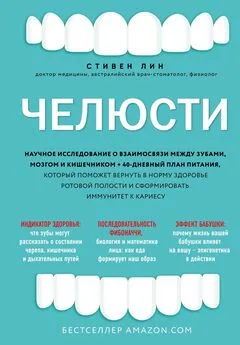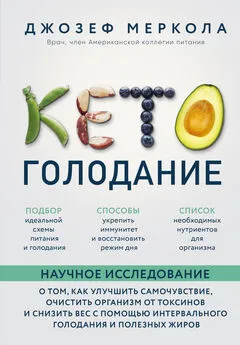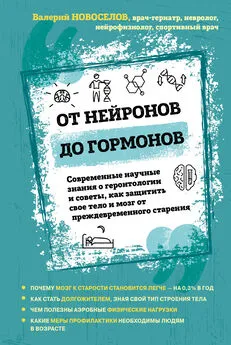Бастиан Блоэм - Нестареющее тело. Научное исследование о том, как защитить свои тело и мозг и не допустить развития неврологических заболеваний
- Название:Нестареющее тело. Научное исследование о том, как защитить свои тело и мозг и не допустить развития неврологических заболеваний
- Автор:
- Жанр:
- Издательство:Эксмо
- Год:2021
- Город:Москва
- ISBN:978-5-04-155994-6
- Рейтинг:
- Избранное:Добавить в избранное
-
Отзывы:
-
Ваша оценка:
Бастиан Блоэм - Нестареющее тело. Научное исследование о том, как защитить свои тело и мозг и не допустить развития неврологических заболеваний краткое содержание
Нестареющее тело. Научное исследование о том, как защитить свои тело и мозг и не допустить развития неврологических заболеваний - читать онлайн бесплатно ознакомительный отрывок
Интервал:
Закладка:
26. Lees AJ, Tolosa E, Olanow CW. Four pioneers of L-dopa treatment: Arvid Carlsson, Oleh Hornykiewicz, George Cotzias, and Melvin Yahr. Movement Disorders. 2015;30(1):19–36.
27. Goetz CG. The history of Parkinson’s disease: early clinical descriptions and neurological therapies. Cold Spring Harbor Perspectives in Medicine. 2011;1(1):a008862; Birkmayer W, Hornykiewicz O. The L-3,4-dioxyphenylalanine (DOPA)-effect in Parkinson-akinesia. Wiener klinische Wochenschrift. 1961;73:787–788.
28. Cotzias GC. L-dopa for Parkinsonism. New England Journal of Medicine. 1968;278(11):630; Cotzias GC, Papavasiliou PS, Gellene R. Modification of parkinsonism – chronic treatment with L-dopa. New England Journal of Medicine. 1969;280(7):337–345; Yahr MD, Duvoisin RC, Schear MJ, Barrett RE, Hoehn MM. Treatment of parkinsonism with levodopa. Archives of Neurology. 1969;21(4):343–354.
29. Sacks O. Awakenings. Rpt. ed. Vintage; 1999./ Оливер Сакс «Пробуждения»
30. Parkinson J. An essay on the shaking palsy. Journal of Neuropsychiatry and Clinical Neurosciences. 2002;14(2):223–236.
31. Osler W, Sir. The Principles and Practice of Medicine. D. Appleton and Company; 1892.
32. Langston JW. The MPTP story. Journal of Parkinsons Disease. 2017;7(s1):S11-S19.
33. Там же.
34. Langston JW, Palfreman J. The Case of the Frozen Addicts: How the Solution of a Medical Mystery Revolutionized the Understanding of Parkinsons Disease. Rev. ed. IOS Press; 2014.
35. Langston JW. The MPTP story. Journal of Parkinsons Disease. 2017;7(s1):S11-S19; Nonnekes J, Post B, Tetrud JW, Langston JW, Bloem BR. MPTP-induced parkinsonism: an historical case series. Lancet Neurology . 2018;17(4):300–301.
36. Langston JW, Ballard P, Tetrud JW, Irwin I. Chronic parkinsonism in humans due to a product of meperidine-analog synthesis. Science . 1983;219(4587):979–980.
37. “NOVA; case of the frozen addict, the.” OpenVault from WGBH Boston/ BBC TV. February 18, 1986. http://openvault.wgbh.org/catalog/V_474C F2C8A20B4173988486AC4C605A3C. At 00:55:25.
38. Cervone C. Frozen addicts; drug addicts developed Parkinson’s disease. Las Vegas World News . December 9, 2013. www.lasvegasworldnews. com/frozen-addicts-drug-addicts-developed-parkinsons-disease/14976. Accessed December 13, 2018.
39. Desmethylprodine. Wikipedia. https://en.wikipedia.org/wiki/ Desmethylprodine. Updated December 31, 2018. Accessed March 31, 2019.
40. Hughes AJ, Daniel SE, Kilford L, Lees AJ. Accuracy of clinical diagnosis of idiopathic Parkinson’s disease: a clinico-pathological study of 100 cases. Journal of Neurology, Neurosurgery, and Psychiatry. 1992;55(3):181–184.
41. Davis GC, Williams AC, Markey SP, et al. Chronic parkinsonism secondary to intravenous injection of meperidine analogues. Psychiatry Research. 1979;1(3):249–254.
42. Там же.
43. Designer drugs: hearing before the Committee on the Budget, United States Senate, Ninety-Ninth Congress, first session, July 18, 1985. US Government Publishing Office; 1985.
44. Там же.
45. Sinclair M. Tragedy has designer label. Washington Post. July 19, 1985.
46. Там же.
47. Langston JW, Palfreman J. The Case of the Frozen Addicts: How the Solution of a Medical Mystery Revolutionized the Understanding of Parkinsons Disease. Rev. ed. IOS Press; 2014.
48. Davis GC, Williams AC, Markey SP, et al. Chronic parkinsonism secondary to intravenous injection of meperidine analogues. Psychiatry Research. 1979;1(3):249–254.
49. Там же.
50. Langston JW, Palfreman J. The Case of the Frozen Addicts: How the Solution of a Medical Mystery Revolutionized the Understanding of Parkinsons Disease. Rev. ed. IOS Press; 2014.
51. Designer drugs: hearing before the Committee on the Budget, United States Senate, Ninety-Ninth Congress, first session, July 18, 1985. US Government Publishing Office; 1985.
52. Sinclair M. Tragedy has designer label. Washington Post. July 19, 1985.
53. Davis GC, Williams AC, Markey SP, et al. Chronic parkinsonism secondary to intravenous injection of meperidine analogues. Psychiatry Research . 1979;1(3):249–254.
54. Designer drugs: hearing before the Committee on the Budget, United States Senate, Ninety-Ninth Congress, first session, July 18, 1985. US Government Publishing Office; 1985.
55. Langston JW. The MPTP story. Journal of Parkinsons Disease. 2017;7(s1):S11-S19.
56. Там же.
57. Goldman SM. Environmental toxins and Parkinson’s disease. Annual Review of Pharmacology and Toxicology. 2014;54(1):141–164; Betarbet R, Sherer TB, Mackenzie G, Garcia-Osuna M, Panov AV, Greenamyre JT. Chronic systemic pesticide exposure reproduces features of Parkinson’s disease. Nature Neuroscience. 2000;3(12):1301–1306; Fleming L, Mann JB, Bean J, Briggle T, Sanchez-Ramos JR. Parkinson’s disease and brain levels of organochlorine pesticides. Annals of Neurology . 1994;36(1):100–103; Priyadarshi A, Khuder SA, Schaub EA, Shrivastava S. A meta– analysis of Parkinson’s disease and exposure to pesticides. Neurotoxicology . 2000;21(4):435–440.
58. Langston JW. The MPTP story. Journal of Parkinsons Disease. 2017;7(s1):S11-S19.
59. “NOVA; case of the frozen addict, the.” OpenVault from WGBH Boston/ BBC TV. February 18, 1986. http://openvault.wgbh.org/catalog/V_474C F2C8A20B4173988486AC4C605A3C. At 00:55:25.
60. Meredith GE, Rademacher DJ. MPTP mouse models of Parkinson’s disease: an update. Journal of Parkinson’s Disease. 2011;1(1):19–33; Porras G, Li Q, Bezard E. Modeling Parkinson’s disease in primates: the MPTP model. Cold Spring Harbor Perspectives in Medicine . 2012;2(3):a009308.
61. Cornelius CE. Animal models – a neglected medical resource. New England Journal of Medicine. 1969;281(17):934–944; Overall KL. Natural animal models of human psychiatric conditions: assessment of mechanism and validity. Progress in Neuro-psychopharmacology and Biological Psychiatry . 2000;24(5):727–776.
62. Barre-Sinoussi F, Montagutelli X. Animal models are essential to biological research: issues and perspectives. Future Science OA . 2015;1(4):FSO63-FSO63.
63. Там же.
64. Giasson BI, Lee VMY. A new link between pesticides and Parkinson’s disease. Nature Neuroscience. 2000;3:1227–1228.
65. Betarbet R, Sherer TB, MacKenzie G, Garcia-Osuna M, Panov AV, Greenamyre JT. Chronic systemic pesticide exposure reproduces features of Parkinson’s disease. Nature Neuroscience. 2000;3(12):1301–1306.
66. Giasson BI, Lee VMY. A new link between pesticides and Parkinson’s disease. Nature Neuroscience. 2000;3:1227–1228.
67. Tanner CM, Kamel F, Ross GW, et al. Rotenone, paraquat, and Parkinson’s disease. Environmental Health Perspectives. 2011;119(6):866–872.
68. Polymeropoulos MH, Lavedan C, Leroy E, et al. Mutation in the a-synuclein gene identified in families with Parkinson’s disease. Science. 1997;276(5321):2045–2047.
69. Olanow CW, Brundin P. Parkinson’s disease and alpha synuclein: is Parkinson’s disease a prion-like disorder? Movement Disorders. 2013;28(1):31–40; Uversky VN, Li J, Fink AL. Pesticides directly accelerate the rate of a-synuclein fibril formation: a possible factor in Parkinson’s disease. FEBS Letters. 2001;500(3):105–108.
70. Luk KC, Kehm V, Carroll J, et al. Pathological a-synuclein transmission initiates Parkinson-like neurodegeneration in nontransgenic mice. Science . 2012;338(6109):949–953.
71. Goedert M, Spillantini MG, Del Tredici K, Braak H. 100 years of Lewy pathology. Nature Reviews Neurology. 2013;9(1):13–24.
72. Spillantini MG, Schmidt ML, Lee VMY, Trojanowski JQ, Jakes R, Goedert M. a-synuclein in Lewy bodies. Nature. 1997;388:839–840; Mezey E, Dehejia AM, Harta G, et al. Alpha synuclein is present in Lewy bodies in sporadic Parkinson’s disease. Molecular Psychiatry . 1998;3:493–499.
73. Holdorff B. Friedrich Heinrich Lewy (1885–1950) and his work. Journal of the History of the Neurosciences. 2002;11(1):19–28.
74. Brin S. LRRK2. Too . September 18, 2008. http://too.blogspot. com/2008/09/lrrk2.html.
75. Zimprich A, Biskup S, Leitner P, et al. Mutations in LRRK2 cause autosomal-dominant parkinsonism with pleomorphic pathology. Neuron. 2004;44(4):601–607.
76. Там же.; Gilks WP, Abou-Sleiman PM, Gandhi S, et al. A common LRRK2 mutation in idiopathic Parkinson’s disease. The Lancet. 2005;365(9457):415–416; Di Fonzo A, Roh6 CF, Ferreira J, et al. A frequent LRRK2 gene mutation associated with autosomal dominant Parkinson’s disease. The Lancet. 2005;365(9457):412–415.
77. Brin S. LRRK2. Too . September 18, 2008. http://too.blogspot. com/2008/09/lrrk2.html.
78. Там же.
79. Sergey Brin. Inside Philanthropy. www.insidephilanthropy.com/guide-to-individual-donors/sergey-brin.html. Accessed March 20, 2019; Goetz T. Sergey Brin’s search for a Parkinson’s cure. Wired. January 22, 2010. www.wired.com/2010/06/ff-sergeys-search. Accessed June 28, 2019.
80. The Associated Press. Twins study links Parkinson’s disease to the environment. New York Times. February 2, 1999.
81. Klein C, Westenberger A. Genetics of Parkinson’s disease. Cold Spring Harbor Perspectives in Medicine. 2012;2(1):a008888; Fleming SM. Mechanisms of gene-environment interactions in Parkinson’s disease. Current Environmental Health Reports. 2017;4(2):192–199.
82. Klein C, Westenberger A. Genetics of Parkinson’s disease. Cold Spring Harbor Perspectives in Medicine. 2012;2(1):a008888.
83. Fleming SM. Mechanisms of gene-environment interactions in Parkinson’s disease. Current Environmental Health Reports . 2017;4(2):192–199.
84. www.reuters.com/article/us-cancer-lung-nutrients-sb/nutrients-may-be-why-some-smokers-avoid-cancer-idUSTRE65E5JW20100616.
85. www.nature.com/articles/nature06846;www.nature.com/articles/ng.3892.
86. www.ncbi.nlm.nih.gov/pmc/articles/PMC4501942; https://pubmed. ncbi.nlm.nih.gov/ 28639421-penetrance-estimate-of-lrrk2-pg2019s-mutation-in-individuals-of-non-ashkenazi-jewish-ancestry.
87. Ryan SD, Dolatabadi N, Chan SF, et al. Isogenic human iPSC Parkinson’s model shows nitrosative stress-induced dysfunction in MEF2-PGC1 atranscription. Cell . 2013;155(6):1351–1364.
88. Nuber S, Tadros D, Fields J, et al. Environmental neurotoxic challenge of conditional alpha-synuclein transgenic mice predicts a dopaminergic olfactorystriatal interplay in early PD. Acta Neuropathologica . 2014;127(4):477–494.
89. Liu H-F, Ho PW-L, Leung GC-T, et al. Combined LRRK2 mutation, aging and chronic low dose oral rotenone as a model of Parkinson’s disease. Scientific Reports. 2017;7:40887. doi:10.1038/srep40887.
90. Weiner WJ. There is no Parkinson disease. Archives of Neurology. 2008;65(6):705–708.
91. Malek N, Weil RS, Bresner C, et al. Features of GBA-associated Parkinson’s disease at presentation in the UK Tracking Parkinson’s study. Journal of Neurology, Neurosurgery & Psychiatry. 2018;89(7):702–709; Saunders-Pullman R, Mirelman A, Alcalay RN, et al. Progression in the LRRK2– associated Parkinson disease population. JAMA Neurology. 2018;75(3):312–319.
Читать дальшеИнтервал:
Закладка:






